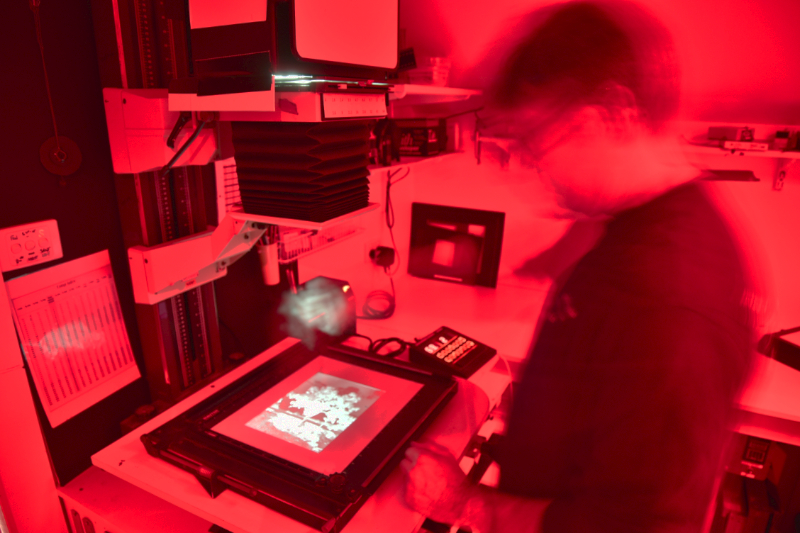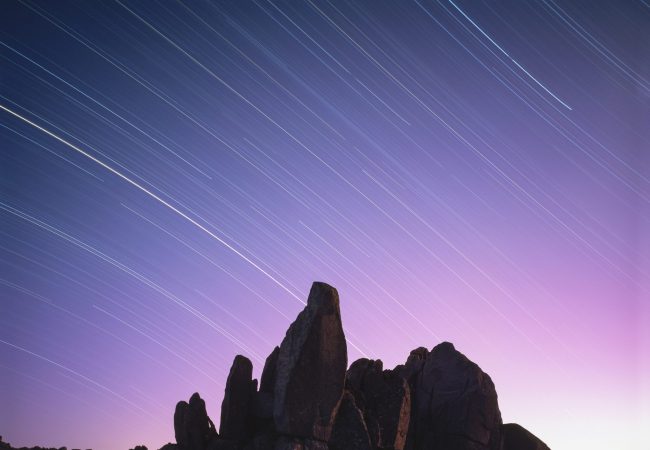
Darkroom – Shane Booth
My darkroom, not so negative.
Prior to writing this article I decided to familiarise myself with preceding darkroom profiles and as a result, l have come to the conclusion that either everyone else has spent hours cleaning up or l am untidy and haphazard, l expect the latter.
My first exposure to darkroom printing was two days in high school. There was a short stint working in the home laundry around 1983. Due to a hazchem incident, I was banished.
It was many years later in 2009 when l returned to analog photography and the joy of black and white film when I joined the Melbourne Camera Club. There I began darkroom printing in earnest as they have a wonderful darkroom that members can use for a very small fee.
Having been bitten by the darkroom bug l decided to take advantage of renovations at home and in 2010/11 an office and darkroom was constructed as a part of a new garage. Location wise the darkroom was created by partitioning a section of my office which is located above the garage. Some may think this could be a distraction to work, but l call it an efficient use of time while on a zoom meeting. Back to the point, this is and will be my first and last darkroom, so what doesn’t work gets made to work and while l don’t see any major changes happening, some rearranging of space is slowly being undertaken.

Firstly the darkroom is approximately 2100 mm wide x 4100 mm long. It is very basic with the key features being a large homemade sink measuring 650 x 2350 x 125 mm internally constructed with timber and coated in 2 pot epoxy paint which is big enough to take five 16 x 20 trays (not that l ever print that large) and the second main component is a 4 x 5 DeVere 504 enlarger with a Ilford 500H head and a selection of 50, 90 and 135 mm lenses.

Access to the darkroom is via a siding cavity door with a black cloth adding some much needed extra light blocking. Immediately on your left is the enlarger sitting on a homemade bench with open shelving and paper storage below. The bench wraps around the corner of the room providing some dry working space. Given my time again this would be twice the area it is. Below on what l will loosely call the dry area is more open storage for film development roller, paper trimmer, film hangers, unopened chemicals, dry towels, 11 x 14 contact frame and various other gear. Built in below the bench is also a UV light box which occasionally gets used for Carbon print making and other alternative print methods. For the rest of the length of the room is the sink, with a stainless steel trough fitted to help with the washing up. Sitting right at the end of the sink is a homemade vertical print washer for up to 12 x 16 prints. At one end above the sink is a drying rack for tanks and glassware, above that is an open shelf for in use chemicals, measuring cylinders and glassware.


From an utilities viewpoint, there are several power points around the room, there are never enough points and they’re not in the right spots. There is only mains pressure cold water running into the area (via a cartridge filter) but warm water is available from a small in-line 240 volt water heater which is almost good enough but l don’t have any temperature balance capability.
Below the sink is a section of print trays in various sizes. For film I use mostly 120 and sheet film up to 8 x 10 and very occasionally 11 x 14, 120 film is developed by hand using standard Patterson tanks, two reels a time with an old GraLab 300 timer which ensures I keep things on track. Sheet film get developed in Unicolor daylight tanks, l have several tanks which do a variety of film sizes from four 4 x 5 up to four 8 x 10 or one 11 x 14 all which gets balanced on a drum roller to develop. Film is then hung to dry above the sink on a stainless wire running below an eye height shelf.
All print finishing is now done in the office area, there is a heat press for up to 12 x 16 dry mounting and flattening fibre based prints. I recently built a 900 x 1200 mm bench on rollers which l can use for various operations such as framing. All my print mats are cut by others.
Things to improve: better lighting, the single white light is behind my head and when l’m at the sink it casts too many shadows, also some heating would be nice. I plan to install a fan/duct to steal some heat from the office area, it should be enough to take the edge off in the mornings during winter. Storage below the sink also needs to be better, currently everything sits on the floor making it hard to keep clean, when I get to it.
However, it is a luxury to have a home darkroom and l’m not complaining. Yes, l did clean up…

Another eleven articles in the Darkroom series can be seen here.




Hey really interesting article Shane; just one observation, when analogue enthusiasts say they are in their last darkroom, there is usually at least another one in them….
Ha, who knows the future.
I’m trying to find out about a photographer from many decades ago based in Collins St Melbourne called Ernest Booth, any relation by chance????
Hi Rachel,
No relation lm afraid. But now I’m interested I’m seeing who he is. Good luck.